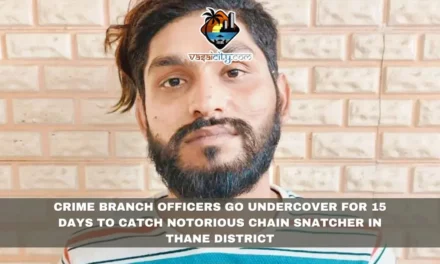On a typical Monday afternoon in Mumbai’s bustling suburb of Nalasopara (East), a routine traffic management duty took a violent turn, leading to a shocking incident inside a local police station. At the heart of the matter was a traffic police constable, Praveen Ranade, aged 33, who experienced an unexpected and severe assault that resulted in him losing a tooth.
Constable Ranade, who is attached to the Vasai traffic branch, was performing his duty on the railway overbridge in Nalasopara. It was around 1:30 pm when his day took an unforeseen detour. Shailesh Waghela, a 36-year-old trader also from Nalasopara, was passing by in an auto rickshaw. For reasons not yet clear, Waghela began recording a video of Constable Ranade as he managed the bustling traffic.
Feeling uneasy about being filmed, Constable Ranade approached Waghela to inquire about his actions. This interaction quickly escalated into a heated argument, prompting Ranade to decide that the matter needed to be addressed formally. He then escorted Waghela to the Tulinj police station to sort out the issue and possibly understand Waghela’s motive behind recording the video.
Once at the station, as Constable Ranade was explaining the situation to the duty officer, the altercation reached a shocking climax. Without warning, Waghela struck Ranade on the right cheek with such force that it knocked out one of Ranade’s teeth. The impact of the slap was not just physical but also caused a significant stir within the precinct.
The other police officers and staff present were quickly drawn into the fray, needing to intervene and control the escalating situation. The station, usually a place of order and authority, momentarily descended into chaos.
In response to the attack, local police acted swiftly. Waghela was arrested and booked under several charges, including assault or use of criminal force to obstruct a public servant from discharging his duty, voluntarily causing harm to deter a public servant from his duties, and intentional insult.
The immediate aftermath of the incident left several unanswered questions, primarily regarding Waghela’s initial intent in recording Constable Ranade. As of now, Waghela has not provided any explanation for his actions, leaving investigators puzzled. To piece together the sequence of events, the police have seized Waghela’s mobile phone, which is likely to contain the video that sparked the altercation. They are also set to review footage from closed-circuit television cameras in the area to gain a clearer understanding of the incident’s context and perhaps Waghela’s motive.
This distressing episode is particularly unsettling as it occurred within the confines of a police station—a place where citizens typically go to seek help and resolve conflicts under the law’s reassuring presence. It starkly highlights the unpredictability and dangers law enforcement officers face even in what appear to be routine and controlled environments.
Furthermore, this incident raises several concerns about public respect towards law enforcement personnel and the challenges they encounter daily. The physical attack on a police officer, especially within a police station, is alarming and raises questions about public perceptions and the respect accorded to those tasked with maintaining public order.
As the police continue their investigation, the community is left to reflect on the respect for law enforcement and the necessary boundaries between the public and police officers. This incident not only affects Constable Ranade physically and mentally but also impacts the morale of other officers. It serves as a stark reminder of the need for constant vigilance, even in seemingly mundane and safe situations.
The coming days will likely provide more information as the police delve deeper into the incident’s details, examining digital evidence and gathering witness statements. The outcome of this investigation will not only decide Waghela’s legal fate but could also influence how traffic police officers are viewed and treated in Nalasopara and beyond. It’s a poignant moment for the community to consider how they interact with those who serve to protect them, ensuring such incidents are an exception rather than a norm.














